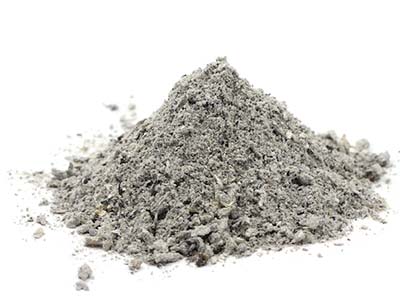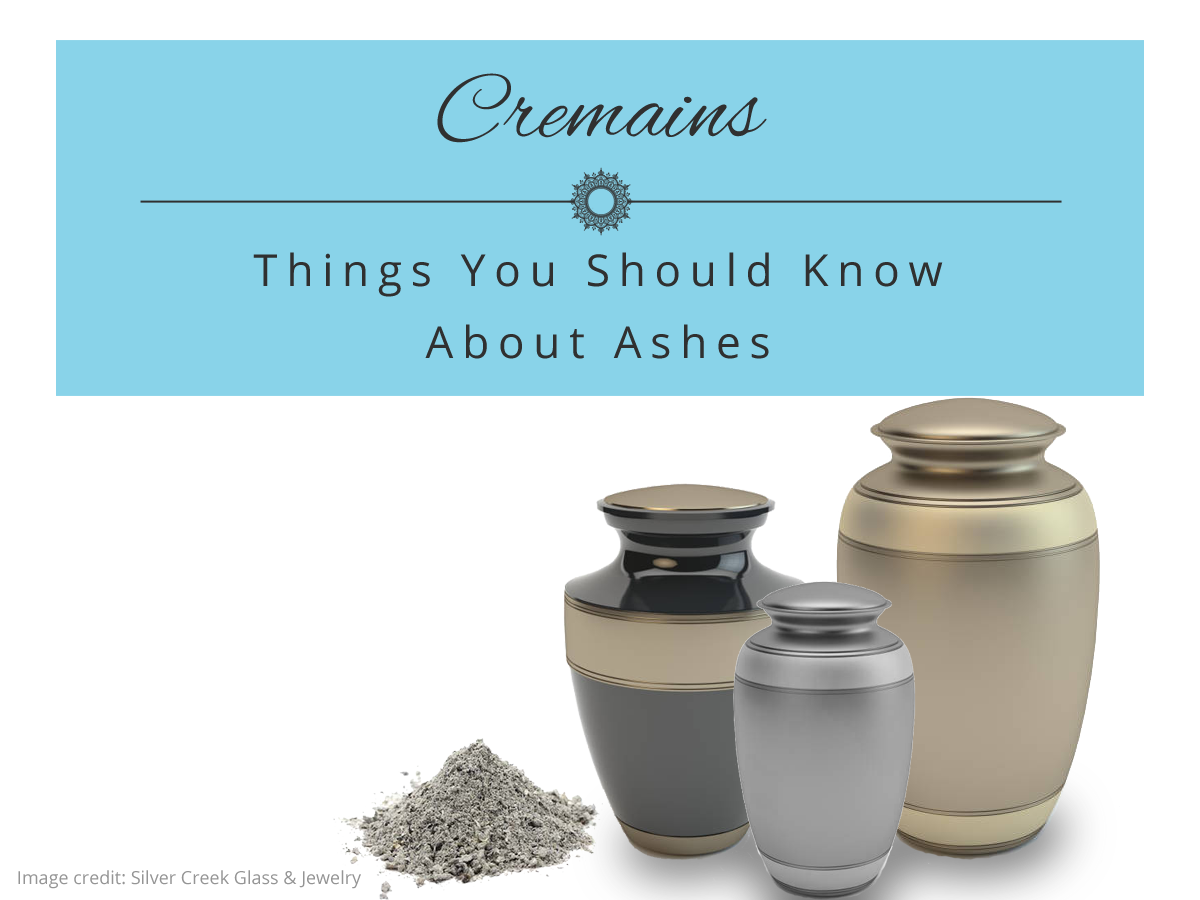Cremains: 9 Things You Should Know
I talk about cremains or ashes in relation to memorials and memorial jewelry often, but what exactly are cremains? What do they look like? Are they safe? I’ve done my best to answer all your questions below.
What are cremains?
Cremains, also known as cremated remains, or ashes are the remains of a person or pet that have been cremated. During traditional cremation, a body is exposed to high temperatures, typically between 1400 and 1800 degrees Fahrenheit, in order to reduce it to ashes and bone fragments. The cremains then go through a machine that breaks down the larger bits of bone. The remains are then placed in an urn or other container for final disposition, such as burial or scattering.
When did Cremation Start?
The practice of cremation has a long history, dating back to ancient civilizations. In Western society, the modern practice of cremation as we know it today began to develop in the late 19th century. The first modern crematorium was built in 1873 by Dr. Franz von Paque in Hamburg, Germany. This was followed by the first crematorium in the United States, which was built in 1876 by Professor Lewis R. Thompson in Washington, D.C.
The popularity of cremation grew in the 20th century, and it became an increasingly common option for funerals. In some countries, cremation is now the most popular choice, with more than half of all deaths being cremated. In the United States, the cremation rate has been growing steadily over the past few decades and is expected to continue to increase in the future.
What do Cremains Look Like?

In traditional cremation cremated remains typically have a grayish-white color and can have a coarse, granular texture similar to coarse sand or fine gravel to a fine powder. They may also have small fragments of bone or tooth among the ashes. The size and shape of the remains will depend on the size of the body and the efficiency of the cremation process, but in general, the average human body can be reduced to about 6 pounds of cremains. Aquamation produces about 9 pounds of fine powder.
What Types of Cremation are There?
There are two types of cremation that produce cremains that are collected:
- Traditional cremation: This is the most common type of cremation, in which a body is placed in a casket or container and then incinerated.
- Alkaline hydrolysis: Also known as water cremation or aquamation, this method uses water and alkaline solutions to break down the body, rather than fire.
Both types of cremation produce cremains, with aquamation cremains being more powder-like.
Are Cremains Toxic?
This is a pretty common question and rightfully so, but cremated remains are not considered toxic, as the high temperatures reached during the cremation process effectively sterilize the remains. However, cremated remains do contain small amounts of potentially harmful chemicals such as heavy metals (e.g. mercury, lead) and other pollutants that can be present in the body at the time of death so it’s important to handle them with care. Before the cremation process, any medical implants, such as pacemakers or other electronic devices, are removed to prevent any damage or toxins.
Can Cremains be Scattered Anywhere?
Some people choose to scatter ashes in a location that has special meaning to them or their loved one, such as a favorite vacation spot or a place where the person lived or worked. It may be surprising to find out that you can’t just go scattering ashes all willy-nilly, anywhere you’d like. There are often local laws or regulations that govern where and how cremains can be scattered. It’s a good idea to check with local authorities before scattering ashes to ensure that you are following any applicable laws or regulations.
Can Cremains be Tested for DNA
Cremated remains do not typically contain DNA. During the cremation process, the body is exposed to extremely high temperatures of around 1700 to 2000 degrees Fahrenheit, which is hot enough to destroy DNA, RNA and other organic molecules.
Can Cremains be Turned into Diamonds or Other Gemstones?
Long story short: No. Sadly, this hasn’t stopped the cremation diamond and gemstone industry from preying on vulnerable, grieving people. You can read more about the scam that is cremation diamonds, here.
Can Cremains be mailed?
Yes! Cremains can be mailed but only through the United States Postal Service (USPS). No other carriers will knowingly ship cremains. The USPS has specific guidelines for the packaging of cremains and they must be shipped via Priority Express. This applies to the cremains as well as any items that contain cremains.
Most memorial artists have some sort of collection kit they provide their customers at the beginning of the memorial process. These collection kits are created using USPS guidelines. If you need to send ashes or memorial items to other friends or family, you can request a collection kit from the USPS and it’s FREE, but you still have to pay the postage.
The Wrap-Up
For me as a memorial artist, cremains are proof-of-life. A life that is so loved and so valued that the very last bit of them has been entrusted to me to memorialize for a lifetime. What an awesome thing it is to be able to provide this service and to be part of someone’s healing process.
Leave your thoughts and comments below!

